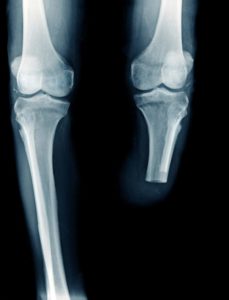
A multicenter retrospective study of the PROOVIT (Prospective observational vascular injury treatment) registry suggests the use of temporary intravascular shunts (TIVSs) results in lower rates of amputation during the early phase of care and should be part of a more aggressive approach to restore perfusion in the most injured patients and ischemic limbs. These findings appear in the April 2021 issue of the Journal of Vascular Surgery.
The “time is tissue” concept suggests time to reperfusion is a critical factor in saving an extremity that has suffered trauma complicated by arterial injury.
The objective of this study was to characterize the effect of using temporary intravascular shunts on early limb salvage and to determine the factors associated with amputation during the acute phase of extremity injury management.
According to the paper’s first-named author Jeanette E. Polcz, MD, of the Uniformed Services University of the Health Sciences and Walter Reed National Military Medical Center, Bethesda, Maryland, “As a damage control adjunct, the use of temporary intravascular shunts can preserve the injured limb while the patient is resuscitated and other injuries are treated. Shunts can also be placed to reperfuse the limb while the patient is transferred to a higher level of care where the TIVS can be removed and a formal vascular repair completed.”
The authors compared the outcomes of patients suffering from a vascular injury to the common, superficial, or deep femoral arteries, popliteal artery, axillary artery, and brachial artery entered into the registry between 2012 and 2018 from 24 trauma centers.
In comparing 613 patients treated without TIVS to 78 patients treated with TIVSs, researchers observed the shunted patients were more:
- Severely injured (19 vs. 12 injury severity score; p=0.002), and
- Mangled (3.2 vs. 3 extremity score; p=0.008).
After propensity matching the groups, analysis revealed:
- Patients without TIVSs were three times more likely to undergo amputation (odds ratio 3.6; p=0.026), and
- Concomitant nerve and orthopedic injury were risk factors for amputation.
The researchers believe this is the first multicenter, matched cohort study to characterize early limb salvage as a function of temporary vascular shunt use in the setting of arterial injury.
“The use of TIVSs as an alternative to ligation is best applied to resource-limited or damage control situations in which neither the time nor the surgical expertise is available to perform vascular reconstruction,” said Polcz. “In contrast, in non-damage control situations and scenarios that involve an isolated vascular injury managed by an experienced surgeon adept at vascular repair, it might be preferable to not use TIVSs and, instead, proceed directly to saphenous vein harvest and expedited interposition grafting.”
The authors note, as a limitation, the PROOVIT registry lacks information on the outcomes of the patients in both cohorts beyond the less-than-two-week follow-up in this study, preventing analysis of the mid- and long-term viability of the treated extremities.












